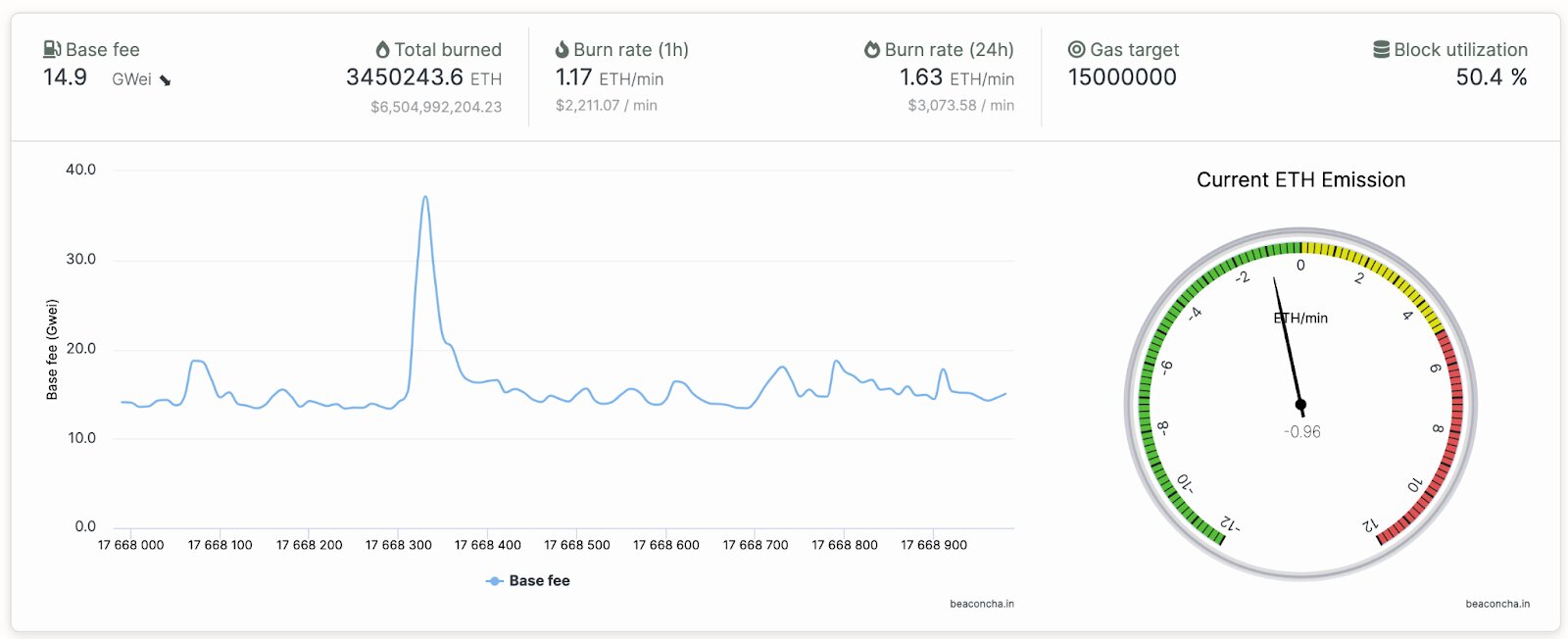Introduction
The world of cryptocurrency has experienced significant ups and downs in recent years, creating a sense of uncertainty among investors and enthusiasts. From the meteoric rise of Bitcoin to the subsequent market crashes and fluctuations, this digital form of currency has captured the attention of people worldwide.
Cryptocurrency, such as Bitcoin, Ethereum, and Litecoin, operates on a decentralized network based on blockchain technology. Unlike traditional currencies, there is no central authority governing these digital assets, making them highly volatile and subject to speculation.
The purpose of this article is to explore the reasons behind the frequent downfalls in cryptocurrency prices. By understanding these factors, investors can make more informed decisions and gain a deeper insight into the nature of the market.
It is crucial to note that the cryptocurrency market is incredibly dynamic and influenced by various internal and external factors. Although cryptocurrency has the potential for significant growth and innovation, it is also subject to sudden and unforeseeable downturns.
Throughout this article, we will delve into the key factors contributing to the volatility of cryptocurrency prices. These factors include market sentiment, regulatory and legal issues, security concerns, economic factors, and technical challenges.
By comprehending these underlying causes, we can gain a clearer understanding of why cryptocurrencies experience periods of decline, helping investors navigate the complexities of this emerging digital landscape.
Volatility of Cryptocurrency Prices
One of the primary reasons behind the frequent fluctuations in cryptocurrency prices is the inherent volatility of the market. Unlike traditional financial markets, such as stocks or commodities, the cryptocurrency market is highly volatile and characterized by rapid price swings.
The decentralized nature of cryptocurrencies, coupled with their limited liquidity and relatively small market size compared to traditional assets, makes them more susceptible to price manipulation and speculative trading. A single news event or a large market order can have a significant impact on the price of a cryptocurrency, causing it to skyrocket or plummet in a matter of hours or even minutes.
This volatility can be attributed to several factors. Firstly, the relatively young and unregulated nature of the cryptocurrency market leads to a lack of stability and investor confidence. Unlike traditional currencies backed by central banks, cryptocurrencies are not tied to any specific country or government. This lack of regulation and oversight can create an environment where market manipulation and fraudulent activities can occur.
Secondly, the speculative nature of cryptocurrency trading exacerbates price volatility. Many investors are drawn to cryptocurrencies primarily as speculative assets, hoping to profit from short-term price movements. This speculative behavior can lead to rapid buying and selling, creating a highly volatile market environment.
Additionally, the lack of widespread adoption and acceptance of cryptocurrencies as a mainstream form of payment also contributes to their volatility. Cryptocurrencies are still relatively new, and many people are hesitant to embrace them as a reliable medium of exchange. This lack of adoption leads to limited liquidity and trading volume, making it easier for large orders to significantly impact prices.
Furthermore, the absence of fundamental factors influencing cryptocurrency prices, such as earnings reports or economic indicators, adds to their volatility. Unlike traditional financial assets, the value of cryptocurrencies is primarily driven by market sentiment, investor behavior, and technological advancements. This reliance on speculative factors further magnifies price volatility.
Overall, the volatility of cryptocurrency prices is a result of various factors, including the lack of regulation, speculative trading, limited adoption, and the absence of fundamental factors. As the cryptocurrency market continues to evolve and mature, it is expected that price volatility may decrease to some extent. However, in the current landscape, investors should be prepared for significant price fluctuations when engaging in cryptocurrency trading or investments.
Market Sentiment and Investor Behavior
Market sentiment and investor behavior play a crucial role in determining the price movements of cryptocurrencies. The sentiment among market participants can be influenced by a variety of factors, including news events, social media discussions, and overall market conditions.
Positive market sentiment, fueled by optimistic news and favorable market conditions, often leads to increased buying activity and upward price movements. On the other hand, negative sentiment, driven by negative news or market uncertainty, can result in panic selling and downward price trends.
Social media platforms, such as Twitter and Reddit, have emerged as significant influencers of market sentiment. Cryptocurrency communities engage in lively discussions, sharing news, opinions, and analysis. The sentiment expressed on these platforms can quickly spread and impact market behavior.
Moreover, major news events, such as regulatory announcements or security breaches, can have a profound effect on market sentiment. For instance, news of a government crackdown on cryptocurrency exchanges or a high-profile hacking incident can trigger widespread panic and sell-offs.
Investor behavior also contributes to the volatility of cryptocurrency prices. Many investors in the cryptocurrency market are retail investors with relatively limited experience and understanding of the market dynamics. Their actions are often driven by fear, greed, and herd mentality.
During periods of high buying pressure and rising prices, investors can succumb to FOMO (Fear Of Missing Out) and engage in impulsive buying, further fueling price increases. Conversely, when prices start to decline, fear sets in, and investors rush to sell their holdings, leading to a downward spiral in prices.
Additionally, institutional investors, such as hedge funds and large financial institutions, have started to enter the cryptocurrency market. Their actions can have a significant impact on market sentiment and price movements. When institutional investors show interest in cryptocurrencies, it can drive positive sentiment and attract more retail investors. Conversely, if institutions express concerns or pull out of the market, it can trigger negative sentiment and prompt selling pressure.
It is essential for investors to monitor market sentiment and be aware of potential shifts in investor behavior to make informed decisions. By understanding the influence of market sentiment and investor psychology, investors can better navigate the cryptocurrency market and mitigate the risks associated with price volatility.
Regulatory and Legal Issues
Regulatory and legal issues have been a significant driver of volatility in the cryptocurrency market. The lack of clear regulations and varying approaches taken by different countries and jurisdictions create uncertainty and risk for investors and market participants.
One of the primary concerns for regulators is the potential misuse of cryptocurrencies for illegal activities, such as money laundering, tax evasion, and financing terrorism. These concerns have prompted governments to implement stricter regulations and oversight in an attempt to combat illicit activities.
Regulatory actions, such as imposing licensing requirements on cryptocurrency exchanges, enforcing anti-money laundering (AML) and know-your-customer (KYC) regulations, and introducing taxation policies, can have a profound impact on the cryptocurrency market. Changes in regulations can lead to decreased liquidity, increased compliance costs, and even the closure of some exchanges, all of which can contribute to market volatility.
Additionally, the legal status of cryptocurrencies varies across jurisdictions. Some countries have embraced cryptocurrencies and blockchain technology, recognizing them as legitimate forms of payment and investment. However, others have banned or imposed significant restrictions on cryptocurrency activities.
When countries implement strict regulations or outright bans, it can create fear and uncertainty among investors, leading to market sell-offs and price declines. Conversely, more favorable regulatory environments, such as the recognition of cryptocurrencies as legal tender, can foster positive sentiment and attract investment.
Furthermore, regulatory actions and legal disputes involving prominent cryptocurrency projects and companies can also impact market sentiment and prices. Lawsuits against cryptocurrency exchanges, allegations of fraud or market manipulation, and regulatory investigations can create negative perceptions and erode investor trust.
As the cryptocurrency market continues to grow and mature, regulatory and legal uncertainties are expected to be addressed to some extent. Increased regulatory clarity can bring more stability to the market and potentially attract institutional investors who are more averse to regulatory risks. However, until a globally harmonized regulatory framework is established, regulatory and legal issues will continue to influence the volatility of cryptocurrency prices.
Security Concerns
Security concerns are a critical factor contributing to the volatility of the cryptocurrency market. The decentralized nature of cryptocurrencies and their reliance on blockchain technology make them attractive targets for hackers and cybercriminals.
One significant security concern in the cryptocurrency ecosystem is the vulnerability of cryptocurrency exchanges. These platforms serve as intermediaries for buying, selling, and storing cryptocurrencies. However, they have been frequent targets of hacking attacks, resulting in the loss of significant amounts of funds.
When a major exchange is hacked, it creates panic among investors and can lead to a mass exodus of funds from that platform. As a result, the affected cryptocurrency may experience a sharp decline in value as investors lose confidence in the security and stability of the overall market.
Moreover, the security of individual wallets used to store cryptocurrencies is also a major concern. While cryptocurrency wallets offer a high level of security through encryption and private key protection, they are not completely immune to breaches. If a wallet is compromised, the funds stored in it can be stolen, leading to significant losses for the owner.
Phishing attacks, where scammers impersonate legitimate cryptocurrency projects or exchanges to trick users into revealing their private keys or passwords, are another security risk in the cryptocurrency space. These attacks can result in the loss of funds and can create a sense of distrust and fear among investors.
Additionally, the security of the underlying blockchain technology itself is crucial. While the blockchain technology used in cryptocurrencies is designed to be secure, vulnerabilities and exploits can still be discovered. Bitcoin, for example, has experienced instances of 51% attacks, where a malicious actor gains control of the majority of the network’s mining power, enabling them to manipulate transactions and wreak havoc on the market.
In response to these security concerns, the cryptocurrency ecosystem has been working towards implementing improved security measures. This includes the development of more secure wallet solutions, the adoption of multi-factor authentication, and the implementation of stronger encryption protocols.
Overall, security concerns continue to be a significant driver of volatility in the cryptocurrency market. The susceptibility of exchanges and wallets to hacking attacks, the prevalence of phishing attempts, and potential vulnerabilities in the blockchain technology itself all contribute to the uncertainty and risk associated with cryptocurrencies.
Impact of Economic Factors
Economic factors have a substantial influence on the volatility of the cryptocurrency market. Cryptocurrencies are not immune to the broader economic landscape and can be impacted by factors such as economic indicators, macroeconomic events, and monetary policies.
One of the significant economic factors affecting cryptocurrencies is investor sentiment and risk appetite. During periods of economic stability and optimism, investors often have a higher risk appetite and may allocate more funds to riskier assets like cryptocurrencies. Conversely, during times of economic uncertainty or market downturns, investors tend to flock to safer, more stable assets, leading to a decline in demand for cryptocurrencies and potential price declines.
The relationship between cryptocurrencies and traditional financial markets is also an important economic factor to consider. Cryptocurrencies are often seen as an alternative investment opportunity, particularly during times of low interest rates or when traditional financial markets are experiencing turbulence. When traditional markets perform poorly, some investors may choose to allocate more capital to cryptocurrencies, leading to increased demand and potentially higher prices.
Monetary policies and central bank actions can also impact cryptocurrencies. When central banks take measures such as adjusting interest rates or implementing quantitative easing, it can have ripple effects on financial markets, including the cryptocurrency market. Changes in monetary policies can influence investor sentiment and liquidity levels, causing volatility in the cryptocurrency market.
Inflation and economic stability are crucial factors as well. Cryptocurrencies, particularly Bitcoin, are often seen as a hedge against inflation, as they are not tied to any specific currency or government. During times of high inflation or economic instability, demand for cryptocurrencies may increase as investors seek alternative stores of value, potentially driving up prices.
Global political and economic events can have a significant impact on cryptocurrency prices. For instance, geopolitical tensions or trade disputes can create uncertainty in the global economy, which may lead investors to seek refuge in cryptocurrencies. Mergers, acquisitions, and industry partnerships can also influence market sentiment and prices, as they can signal increased adoption and potential growth for specific cryptocurrencies.
It is important for investors to stay informed about economic factors and their potential impact on the cryptocurrency market. By understanding the relationship between cryptocurrencies and the broader economy, investors can make more informed decisions and navigate the volatility associated with economic fluctuations.
Technical Challenges and Scalability Issues
Technical challenges and scalability issues have been a persistent concern in the cryptocurrency space, contributing to price volatility and market uncertainty. These challenges arise from the underlying technology that powers cryptocurrencies, such as blockchain, and the limitations it faces in terms of scalability and efficiency.
One of the primary technical challenges is the scalability of blockchain networks. Bitcoin, for instance, has faced scalability issues due to the limitations of its underlying technology. As the number of participants and transactions on the network increases, the blockchain becomes congested, resulting in slower transaction confirmation times and higher fees. This scalability bottleneck can create frustration among users and potentially affect the market value of cryptocurrencies.
Another technical challenge is the energy consumption associated with cryptocurrency mining. The process of validating and adding transactions to the blockchain requires substantial computational power, which in turn requires a significant amount of energy. The environmental impact and sustainability concerns associated with cryptocurrency mining have drawn attention and can potentially impact investor sentiment and regulatory decisions.
Additionally, the security and integrity of blockchain networks are critical concerns. While blockchain technology is designed to be secure against attacks and tampering, there have been instances of successful attacks on specific cryptocurrencies. Security vulnerabilities can undermine investor confidence, leading to price declines and increased market volatility.
Furthermore, technical issues and glitches experienced by cryptocurrency exchanges can also contribute to price volatility. System failures, trade execution problems, and other technical issues can result in losses for traders and can erode trust in the reliability and stability of exchanges. Such incidents can trigger panic selling or the withdrawal of funds from exchanges, ultimately impacting the overall market sentiment and prices.
Emerging technologies, such as decentralized finance (DeFi) and non-fungible tokens (NFTs), present both opportunities and technical challenges. The sudden surge in popularity of DeFi platforms and NFT marketplaces has placed significant strain on blockchain networks, causing congestion and increased transaction fees. Scaling solutions and technical upgrades are needed to ensure seamless and cost-effective transactions.
Addressing these technical challenges and scalability issues requires ongoing research and development in blockchain technology. Improvements in network protocols, consensus mechanisms, and scalability solutions, such as sharding and layer-two solutions, are being explored to enhance the efficiency and scalability of blockchain networks.
Investors should be aware of these technical challenges and scalability issues when engaging in the cryptocurrency market. Understanding the limitations and potential solutions can help investors make informed decisions and set realistic expectations regarding the future development and scalability of cryptocurrencies.
Conclusion
The volatility of cryptocurrency prices can be attributed to a combination of factors. Market sentiment and investor behavior play a significant role, with positive or negative sentiment driving buying or selling activity, leading to price fluctuations. Regulatory and legal issues create uncertainty and can impact market sentiment and investment decisions. Security concerns surrounding exchanges, wallets, and the underlying technology contribute to market volatility as well.
Economic factors, such as investor sentiment, monetary policies, and global events, shape the demand for cryptocurrencies and influence their prices. Technical challenges and scalability issues within blockchain networks also impact price volatility by affecting transaction speeds, fees, and network security. These factors collectively contribute to the dynamic and ever-changing nature of the cryptocurrency market.
While the cryptocurrency market has emerged as an exciting and potentially lucrative opportunity, it is crucial for investors to exercise caution and stay informed. Understanding the various factors that drive price volatility can help investors make educated decisions and manage risks effectively.
As the cryptocurrency market evolves and regulatory frameworks become clearer, it is expected that volatility may decrease to some extent. Adoption, innovation, and improving scalability solutions are key areas to watch for potential stability in the future.
In conclusion, the volatility of cryptocurrency prices is influenced by a complex interplay of market sentiment, regulatory and legal issues, security concerns, economic factors, and technical challenges. By staying informed and understanding these factors, investors can navigate the cryptocurrency market with a greater sense of awareness and preparedness.

























